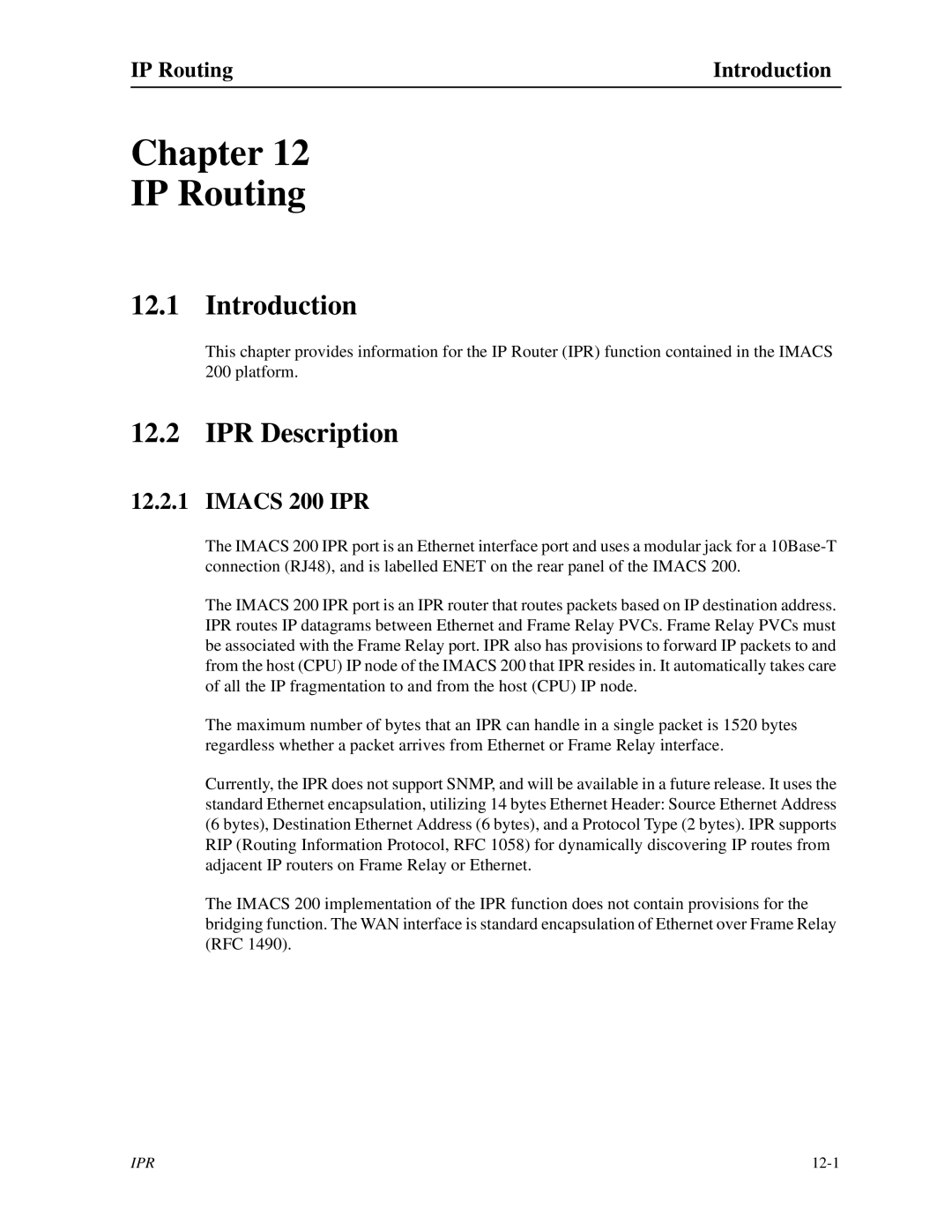IP Routing | Introduction |
Chapter 12
IP Routing
12.1 Introduction
This chapter provides information for the IP Router (IPR) function contained in the IMACS
200 platform.
12.2IPR Description
12.2.1 IMACS 200 IPR
The IMACS 200 IPR port is an Ethernet interface port and uses a modular jack for a
The IMACS 200 IPR port is an IPR router that routes packets based on IP destination address. IPR routes IP datagrams between Ethernet and Frame Relay PVCs. Frame Relay PVCs must be associated with the Frame Relay port. IPR also has provisions to forward IP packets to and from the host (CPU) IP node of the IMACS 200 that IPR resides in. It automatically takes care of all the IP fragmentation to and from the host (CPU) IP node.
The maximum number of bytes that an IPR can handle in a single packet is 1520 bytes regardless whether a packet arrives from Ethernet or Frame Relay interface.
Currently, the IPR does not support SNMP, and will be available in a future release. It uses the standard Ethernet encapsulation, utilizing 14 bytes Ethernet Header: Source Ethernet Address (6 bytes), Destination Ethernet Address (6 bytes), and a Protocol Type (2 bytes). IPR supports RIP (Routing Information Protocol, RFC 1058) for dynamically discovering IP routes from adjacent IP routers on Frame Relay or Ethernet.
The IMACS 200 implementation of the IPR function does not contain provisions for the bridging function. The WAN interface is standard encapsulation of Ethernet over Frame Relay (RFC 1490).
IPR |
